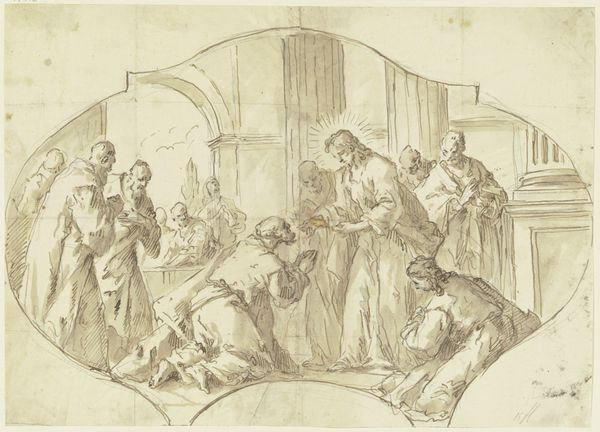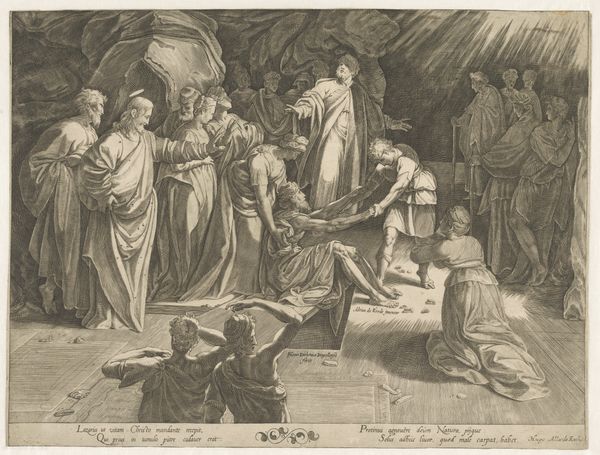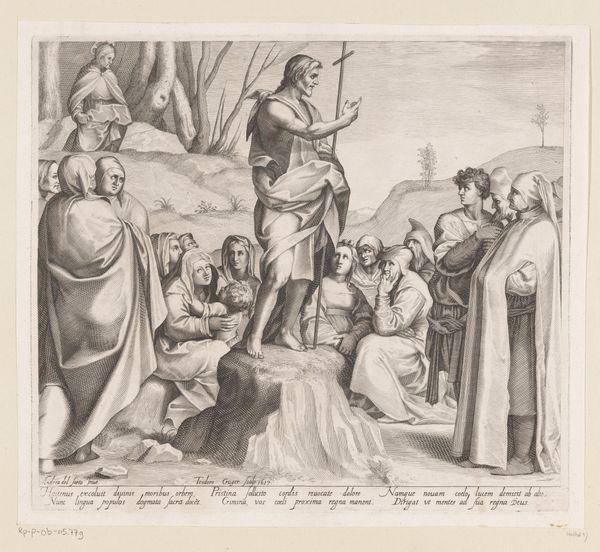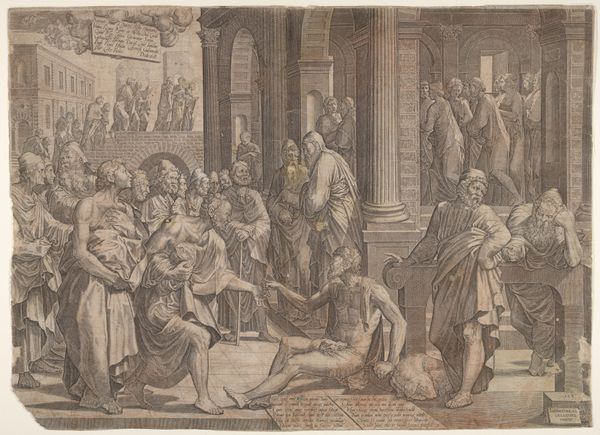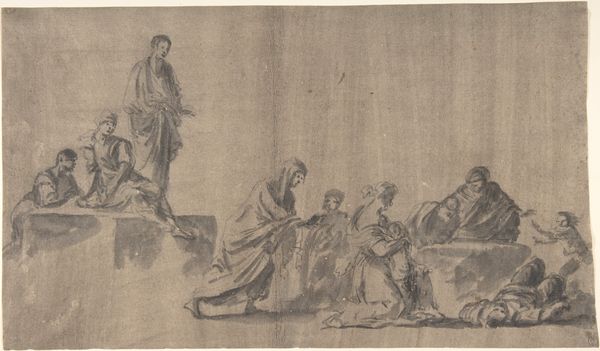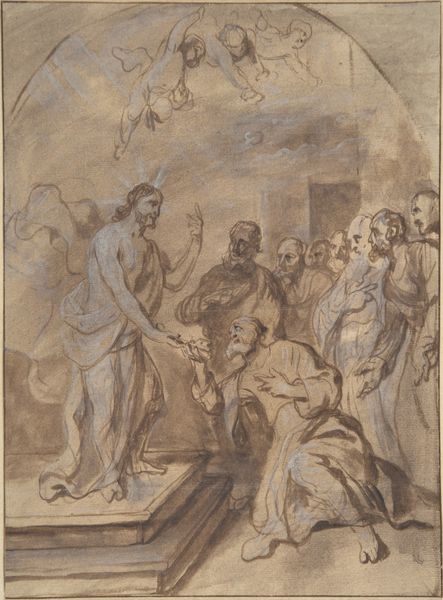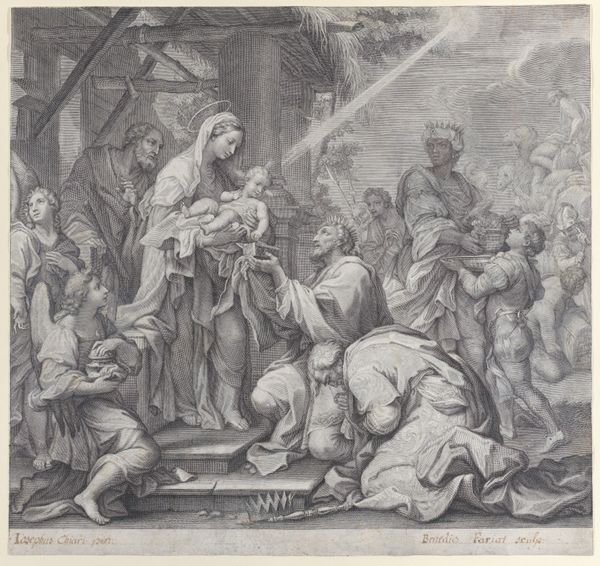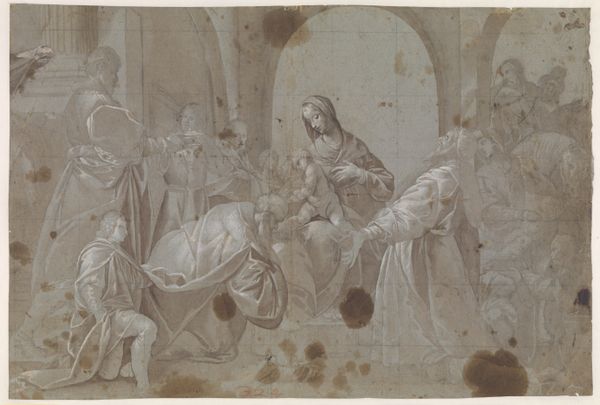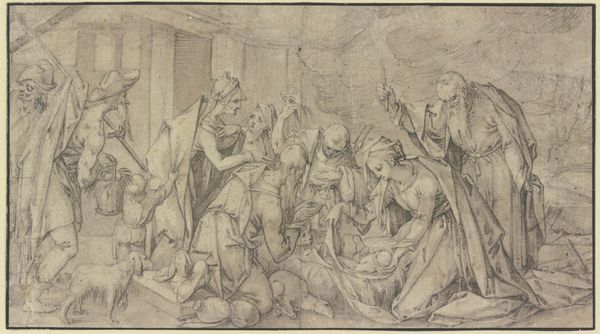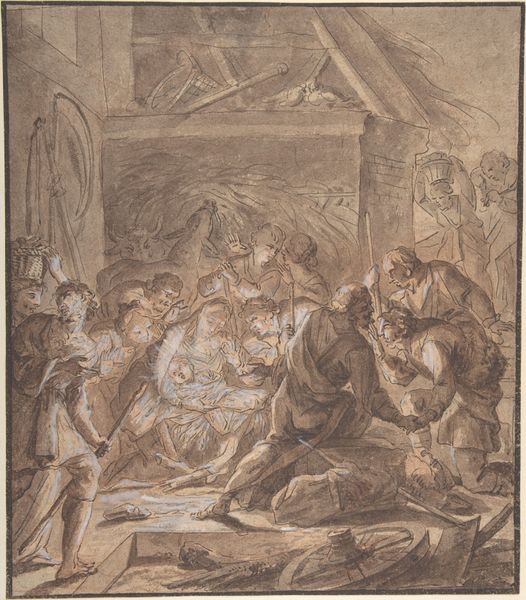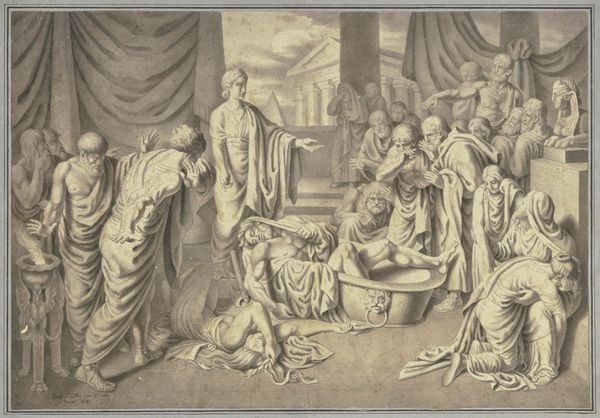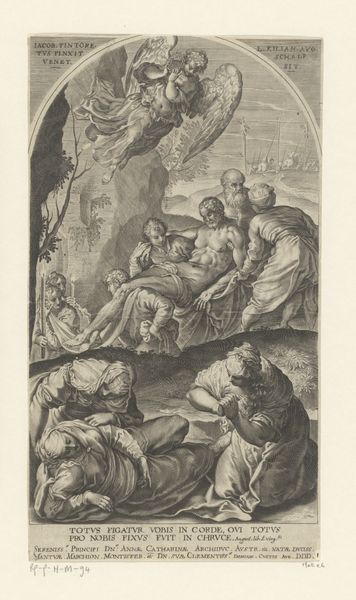
Scene with the Presentation of a Saint's Relic (recto); Head of a Woman (verso) 1800 - 1900
0:00
0:00
drawing, print, ink
#
drawing
#
narrative-art
# print
#
charcoal drawing
#
figuration
#
ink
#
history-painting
#
academic-art
Dimensions: 8 x 10-1/4 in. (20.3 x 26 cm)
Copyright: Public Domain
Curator: Here we have "Scene with the Presentation of a Saint's Relic," an anonymous drawing made sometime between 1800 and 1900, now residing at the Metropolitan Museum of Art. It appears to be rendered in ink and charcoal. Editor: My initial impression is one of high drama, a sense of formal ceremony juxtaposed against the desperate pleas of the figures kneeling to the right. The artist masterfully uses light and shadow to direct the viewer's gaze. Curator: The presentation of a saint's relic during this era was deeply connected to the social hierarchy of the church. It reminds me how religious artifacts became both symbols of hope and tools of control. The fervent devotion of the supplicants suggests a society grappling with power dynamics. Editor: Observe how the composition is carefully balanced: the static, robed figures on the left create a solid vertical counterpoint to the dynamic, almost swirling, cluster on the right. Note also how the architectural backdrop mimics the somber tone. Curator: Absolutely. It's crucial to consider the role of women and children here. Often marginalized, they are placed centrally within the scene, their need amplified, emphasizing the role of the Church as a protector. Their desperation reflects the societal safety nets—or lack thereof—of that time. Editor: And the monochromatic palette—primarily greys—contributes to the gravitas. It underscores the solemnity, almost completely avoiding distractions, guiding our contemplation on the core subject matter. The lack of color seems a conscious choice to elevate emotional impact. Curator: Thinking about contemporary parallels, these displays still manifest in ways people seek solace, community, and perceived intervention. We can unpack the expectations placed on institutions to provide care—and when those expectations are met or failed. Editor: By analyzing the linear perspective and figure placement, we gain insight into the artist's construction of space, almost as if designed for a stage setting to reinforce its narrative. Curator: Examining the piece through a contemporary lens provokes contemplation about faith and resilience, prompting us to consider how these themes resonate with vulnerable individuals in any historical era. Editor: Indeed, delving into its visual language allows the artwork to exist as a statement regarding timelessness and the enduring human impulse towards storytelling.
Comments
No comments
Be the first to comment and join the conversation on the ultimate creative platform.
